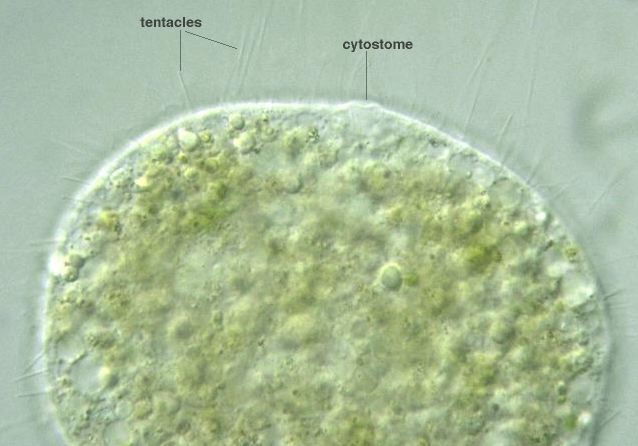 Family & Genus: Body ovoid; tentacle-like processes contain toxicysts (Illustrated Guide, 1985).
Cell body ovate or spherical; ciliation uniform; extensible tentacles present among cilia;
contractile vacuole posterior; macronucleus curved band; fresh water (Kudo, 1966).
Family & Genus: Body ovoid; tentacle-like processes contain toxicysts (Illustrated Guide, 1985).
Cell body ovate or spherical; ciliation uniform; extensible tentacles present among cilia;
contractile vacuole posterior; macronucleus curved band; fresh water (Kudo, 1966).
Species: 100-200 μm long; cell body ovoid, pale yellowish brown; cytostome anterior with short collar; about 30 rows of cilia and tentacles; tentaciles not knobbed; fresh water (How to know the protozoa, 1979).









